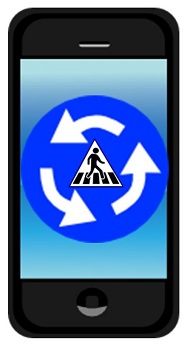A newly released report has revealed that 25 percent of e-shoppers are using smartphones and tablets.
A report that has recently been issued by Monetate has shown that approximately one quarter of all of the global online shopping comes from mobile commerce traffic through smartphones, tablets, and other devices.
This represents a meaningful increase in the sector’s share, even within the last quarter, alone.
Monetate’s data showed that mobile commerce traffic increased by about 3 percent within the last quarter. Of that mobile device based shopping, tablets represent approximately two thirds. This means that tablet users are currently responsible for about 15 percent of all of the ecommerce activity that is going on at the moment.
The larger screen devices have been representing a larger proportion of mobile commerce traffic.
 Smartphones, on the other hand, are still being used more often for online shopping purposes worldwide, but they make up about one third of the mcommerce share. This means that of all ecommerce activity, smartphone users are contributing about 10 percent.
Smartphones, on the other hand, are still being used more often for online shopping purposes worldwide, but they make up about one third of the mcommerce share. This means that of all ecommerce activity, smartphone users are contributing about 10 percent.
When it comes to the average amount that users of these devices are spending when they make an order online, it is becoming clear that purchases are not limited exclusively to small items anymore. This reports data even indicates that the average order value made through tablets actually exceeded that of desktops and laptops within the last quarter. That said, PCs still hold their dominance over the online shopping marketplace, by quite a large majority.
The average order value made over a laptop or desktop computer was $136. Just slightly higher was the average order value made over tablets, which was $139. Finally, over smartphones, it was still a high number, though quite a bit lower than the orders made over PCs and tablets, having been $114.
In terms of specific brands and their contribution to mobile commerce traffic, it is Apple’s iPad that reigns supreme. That device is responsible for more than half of the online shopping done over tablets. That share of the tablet commerce category actually increased over the last quarter despite the fact that there is notably greater competition.

 That said, even without taking the browsing, price comparisons, receipt of advertising and discount coupons, and other activities into account, there has still been a great deal of growth, so far, over the holiday shopping season when it comes to mobile commerce purchases. But it seems to be in those “process” activities on the way to actually buying that small screens truly shine. IBM Digital Analytics Benchmark reported that almost 40 percent of all of the online traffic on Black Friday and almost a third of all online traffic on Cyber Monday was from smartphones and tablets.
That said, even without taking the browsing, price comparisons, receipt of advertising and discount coupons, and other activities into account, there has still been a great deal of growth, so far, over the holiday shopping season when it comes to mobile commerce purchases. But it seems to be in those “process” activities on the way to actually buying that small screens truly shine. IBM Digital Analytics Benchmark reported that almost 40 percent of all of the online traffic on Black Friday and almost a third of all online traffic on Cyber Monday was from smartphones and tablets.